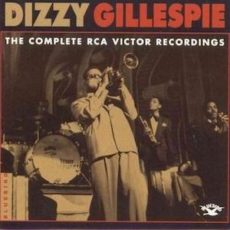
Daily Dose Of Jazz…
Sam Allen was born in Middleport, Ohio on January 30, 1909 and beginning at the age of seven started playing the piano. By 10 he accompanied silent films on piano in movie theaters, allowing him to sit and extemporize as the action unfolded on screen. Over the next few years he absorbed plenty of slapstick hi-jinx and derring-do from the Hollywood sagas he accompanied.
1928 saw the 19 year old Sam moving to New York City where he joined Herbert Cowans’s band at the Rockland Palace. It wasn’t too long after the move before he moved back to Ohio, where he played with saxophonist Alex Jackson through 1930.
He joined James P. Johnson’s orchestra as a second pianist absorbing the intense chords in the scores that required two pianos. For amuch of the ’30s, he played with the dance band of Teddy Hill including a European tour. In the 1940s he had one of his most musically satisfying collaborations as piano man in the sometimes rowdy combo of violinist Stuff Smith. Playing in the hyper-drive bebop of Dizzy Gillespie, and then the shenanigans as pianist for the madcap jive jazz duo Slim Gaillard & Slam Stewart.
As the Fifties approached he relocated to Washington, shifting gears from touring sideman to stay-at-home featured soloist. He then headed for California where he settled into the Oakland jazz scene, often accompanying the fine singer Billie Heywood. Pianist Sam Allen transitioned at the age of 63 in April 1963.
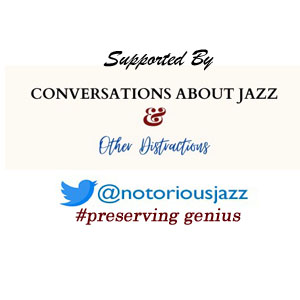
More Posts: history,instrumental,jazz,music,piano

Daily Dose Of Jazz…
George Handy, born George Joseph Hendleman on January 17, 1920 in New York City, where his musical beginnings were fostered under the tutelage of composer Aaron Copland.
He first worked professionally as a swing pianist for Michael Loring in 1938. Soon afterward George was drafted into the United States Army in 1940. Post WWII, from 1944 to 1946 he became a member of the Boyd Raeburn Orchestra, composing and performing on piano. This was during a time when many big bands were transforming their musical tendencies toward bebop. Leaving the orchestra briefly to work for Paramount Studios, he returned to Raeburn quickly. During this period he entered one of his most creative periods, doing arrangements of older standards with a distinctly bebop quality.
A rift between him and Raeburn, just as he was entering his prime, forced him to depart the group. Handy continued to arrange for other musicians in his later career.
Pianist, arranger and composer George Handy, best remembered in retrospect for his bebop arrangements, transitioned in Harris, New York, on January 8, 1997 at the age of 76, from heart disease.

More Posts: arranger,composer,history,instrumental,jazz,music,piano
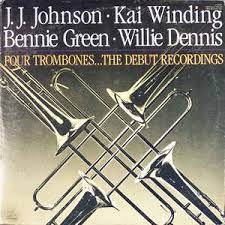
Daily Dose Of Jazz…
Willie Dennis wsa born William DeBerardinis on January 10, 1926 in Philadelphia, Pennsylvania. After working with Elliot Lawrence, Claude Thornhill, and Sam Donahue, he went to work with Charles Mingus, appearing on two of Mingus’s albums in 1959, Blues & Roots and Mingus Ah Um. In 1953, due to his relationship with Mingus he recorded Four Trombones (on the bassist’s Debut Records label and was released in 1957. The other three trombones were J. J. Johnson, Kai Winding and Bennie Green.
In 1951, Dennis began studying with Lennie Tristano. To make ends meet, he worked as an attendant at the Museum of Modern Art. The fullest recorded example of Dennis’s solo work is on a little-known 1956 Savoy disc by English pianist Ronnie Ball, who was also a Tristano student. The album was titled All About Ronnie, and included Ted Brown and Kenny Clarke.
He toured with Mingus in 1956, published an essay, The History of the Trombone, in Metronome. By the late 1950s Willie had returned to his big band roots and joined Buddy Rich in 1959 after stints with Benny Goodman and Woody Herman. During the 1960s, he often performed with Gerry Mulligan.
He had an extremely fast articulation on the trombone, which he obtained by means of varying the natural harmonics of the instrument with minimal recourse to the slide, a technique known as crossing the grain. He recorded with Cannonball Adderley, Manny Albam, Al Cohn, Mundell Lowe, Gary McFarland, Gerry Mulligan, Oliver Nelson, Anita O’Day, Shirley Scott, Zoot Sims and Phil Woods.
Known for his big band musicianship but who could also execute as an excellent bebop soloist, trombonist Willie Dennis, who was married to Morgana King in 1961, transitioned due to an automobile accident in Central Park on July 8, 1965 in New York City.

More Posts: bandleader,history,instrumental,jazz,music,trombone
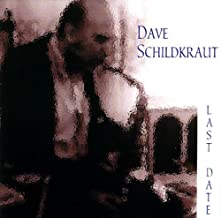
Daily Dose Of Jazz…
Dave Schildkraut was born on January 7, 1925 in New York, New York and started playing professionally in 1941, first with Louis Prima. He followed this five year residency with Buddy Rich and Anita O’Day through the end of the decade and into the Fifties.
He moved on to hone his craft further by working with Stan Kenton, Pete Rugolo, Oscar Pettiford, Miles Davis, George Handy, Tony Aless, Ralph Burns, Tito Puente, Johnny Richards, and Kenton again in 1959. During the 1960s, Dave freelanced around New York City, appearing regularly with Eddie Bert at the West End Cafe. Later in his life he went into semi-retirement.
His playing was fluid and brilliant in pure bebop style but Schildkraut only recorded one album as a leader, in 1979. However, the album wasn’t released until 2000 by Endgame Records as Last Date. As a sideman he recorded sixteen albums.
Alto saxophonist Dave Schildkraut, whose style mimicked Charlie Parker but later showed influences of John Coltrane, Warne Marsh and Lee Konitz, transitioned on January 1, 1998 in Darien, Connecticut.

More Posts: bandleader,history,instrumental,jazz,music,saxophone
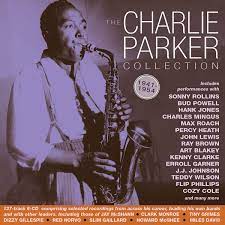
Daily Dose Of Jazz…
Jerome Darr was born on December 21, 1910 in Baltimore, Maryland. His first major professional affiliation was in a jug band, the Washboard Serenaders. The guitarist was a member of this group from 1933 through 1936, a tenure that included a well-received European tour.
He had an incredibly versatile and prolific career. He showed up on sessions from blues to bebop and even strummed a few arpeggios behind Frankie Lymon & the Teenagers.
Though Jerome was not hiding in a closet during the ’40s, the guitarist simply focused on work as a studio musician during an era when the efforts of such players went largely uncredited. He was a player in the classic jazz context of Buddy Johnson’s band in the early ’50s, or was working with the much more modernistic Charlie Parker during roughly the same period.
He played on some 20 recording sessions between 1935 and 1973, though to his credit or noncredit, his playing included many other styles besides jazz. In his final years, Darr was mostly swinging in the busy band of trumpeter Jonah Jones, in a sense coming full circle with the type of playing he had started out with.
Guitarist Jerome Darr passed away on October 29, 1986 in Brooklyn, New York.
More Posts: guitar,history,instrumental,jazz,music


